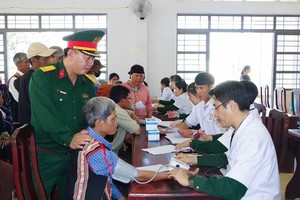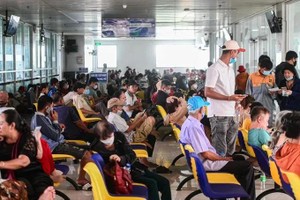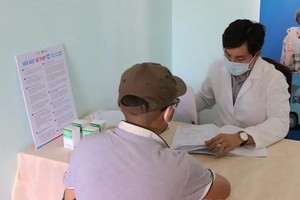
The Ministry of Health reported that Japan's ongoing seasonal flu outbreak is primarily driven by influenza A. However, officials warn that influenza B remains a potential threat.
The National Institute of Infectious Diseases in Japan’s data released on January 31 showed that Japan is grappling with one of its worst influenza outbreaks in decades, with infection numbers reaching record highs. From September 2, 2024 to January 26, 2025, Japan recorded about 9.5 million cases of seasonal flu. Approximately 317,000 cases were reported across medical institutions in the final week of December 2024.
Tokyo, Hokkaido, Osaka, and Fukuoka—Japan’s major population centers and top tourist destinations—are experiencing the highest impact from the ongoing seasonal influenza outbreak, the Ministry of Health reported. Influenza A virus is mainly responsible for the outbreak but authorities caution that influenza B is still a potential threat.
The World Health Organization (WHO) has issued a global health alert for the Northern Hemisphere, highlighting a significant increase in the prevalence of acute respiratory infections. This includes infections associated with seasonal influenza, respiratory syncytial virus (RSV), and other common respiratory pathogens, such as human metapneumovirus (hMPV) and Mycoplasma pneumoniae.
Recent WHO surveillance data indicates a surge in influenza cases across multiple regions. In Europe, all subtypes of influenza viruses have been detected, while North America, Central America, and North Africa are seeing predominantly influenza A (H3N2) cases. Influenza B is more prevalent in West and East Africa, while Asia is largely experiencing an increase in influenza A (H1N1). Some Northern Hemisphere nations have already surpassed their seasonal baseline for flu-like and acute respiratory infections in late 2024.
In response, Japan’s Ministry of Health reaffirmed its commitment to closely monitoring the domestic and global situation, ensuring timely and effective interventions. Authorities emphasize the importance of providing accurate information to the public—avoiding unnecessary panic while maintaining vigilance against the evolving outbreak, particularly as weather conditions favor respiratory virus transmission.
To curb infections, the Vietnamese Health Ministry advised people to adopt preventive measures, including covering the mouth and nose when coughing or sneezing with a cloth, tissue, or sleeve to limit the spread of respiratory droplets, donning masks in crowded places and on public transportation, regularly washing hands with soap and water or using hand sanitizers, seeking medical advice instead of self-medicating when experiencing symptoms such as cough, fever, runny nose, headache, or fatigue.
























